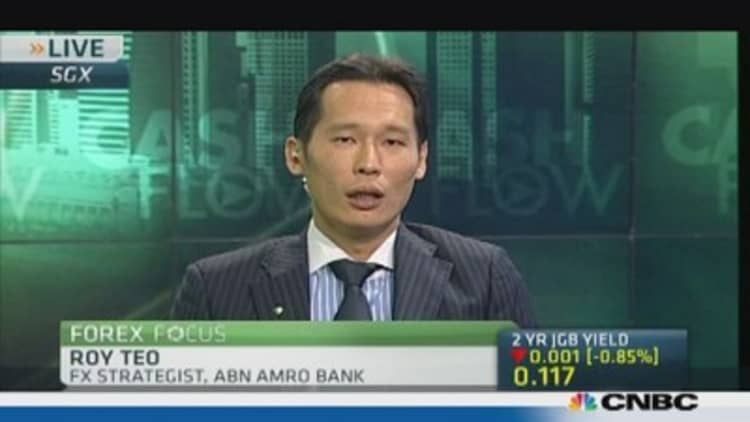Most of Asia's currencies may have recovered from last month's rout, but Indonesia's rupiah just can't get any love, with the currency continuing to weaken.
The rupiah touched levels around 11,580 against the U.S. dollar Tuesday, its weakest level since April 2009, shedding around 20 percent of its value this year. The declines continued even after the country's central bank raised rates by 150 basis points since June, including surprise rate hikes in August and September that brought rates to 7.25 percent.
The selloff began in August as fears over a tapering of the Federal Reserve's asset purchase program prompted sharp capital outflows from the region, with concerns about Indonesia's current account deficit adding extra pressure to the rupiah.

"A bit of confidence is building up, but there's not been a significant return of liquidity," despite the market turning slightly more positive on the rupiah after the central bank's rate hikes and moves to reduce fuel price subsidies, said Dominic Bunning, an associate director for foreign-exchange strategy at HSBC.
"Without the depth of liquidity, it's difficult to know the true price at the moment. I'm really looking for when we do have that liquidity coming back," he said. "Once that happens, the currency will be better placed to stabilize, though there are still some structural issues that need to be tackled to see an improvement in the medium term outlook."
(Read more: )
Some traders may be a bit spooked by Bank Indonesia's scrutiny of their actions during the volatility which began in late May. Reuters reported in July that the central bank sent officials into trading rooms to pressure traders, in a move aimed at shutting down all but the most essential deals to sell rupiah. At the time, Bank Indonesia said it didn't have a program to send staff to trading rooms, according to the report.
UBS remains cautious on the rupiah, noting Bank Indonesia drew heavily on its foreign exchange reserves over the past three months to defend the currency and that the central bank is likely to use recent U.S. dollar weakness to rebuild those reserves.
In a report, UBS also said it expects higher inflation means Indonesia will need to let its currency depreciate over the long term in order to remain competitive. It advises using any near-term rebound to trim rupiah holdings.
(Read more: Charting Asia: Is the rupiah drubbing nearly over?)
Policymakers may not be very motivated to bolster the rupiah.
"If the currency strengthens a bit, it will become more difficult to rectify the current account deficit," said Erwan Teguh, head of research at CIMB in Indonesia.
He expects the weaker rupiah may dent consumption somewhat, but he notes businesses seem to be taking the weakness in stride.
"We've seen 14,000 and 16,000 (to the U.S. dollar) before and the businesses seem to be adjusting to this level quite well," he said, noting some are very optimistic.
(Read more: EM currency plunge not over yet: HSBC)
He also noted Indonesia's stock and bond markets aren't reacting in as bearish a manner as the currency.
While the stock market is down around 14 percent from its May peak, it has recovered around 13 percent from its August trough. The 10-year treasury bond yield is around 8 percent, down from around 8.9 percent in early September, although it remains well above the around 5 percent yield in January, according to Reuters data.
Indeed, the non-deliverable forward market is pricing the rupiah closer to 11,000, Teguh noted. "Clearly the forward market is assuming the rupiah will strengthen."

